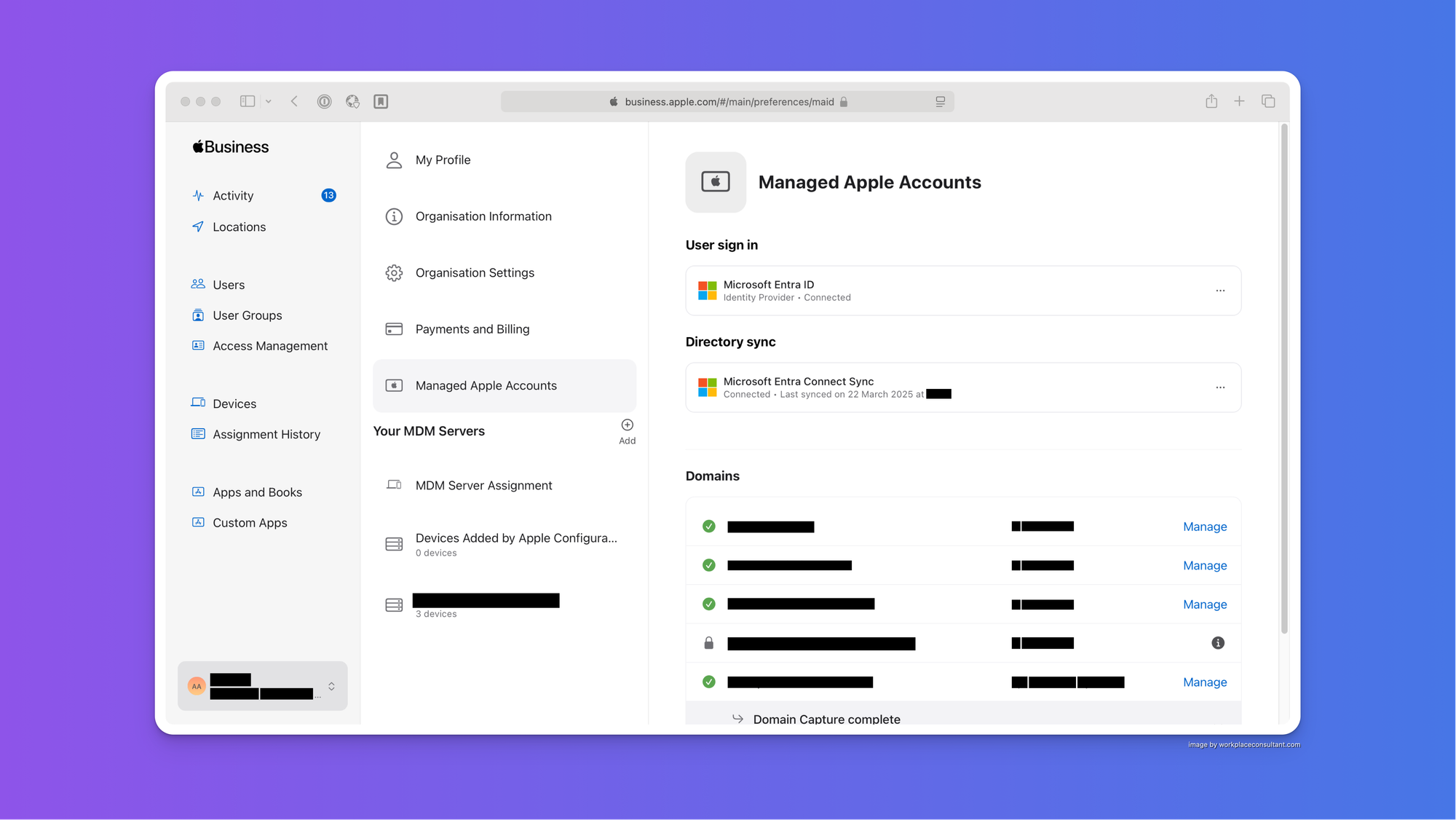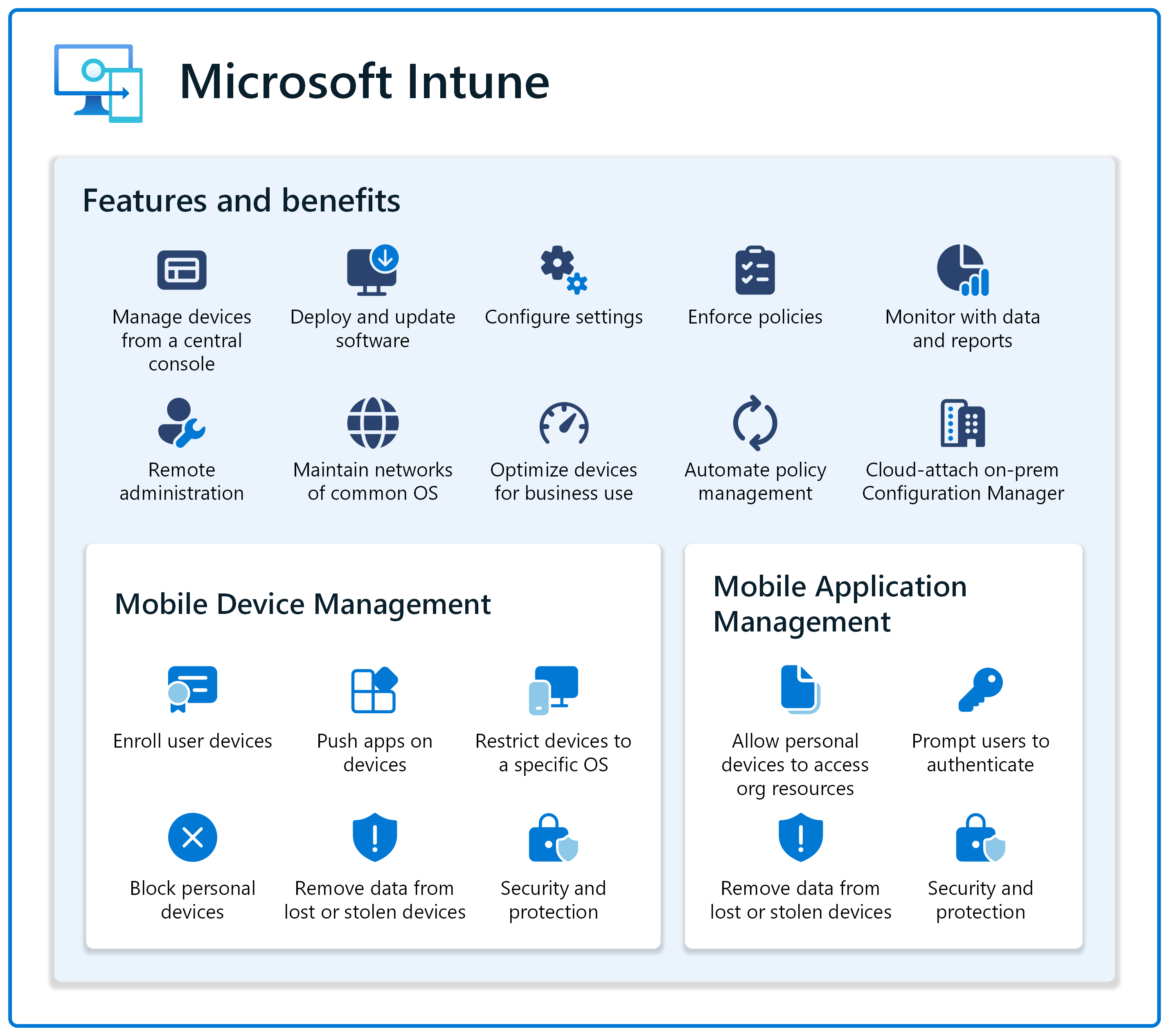The business case for mobile device and app management (MDM)

In today’s hybrid work environment, the question is not whether your organisation needs mobile device management—it is whether they can afford to operate without it.
Most organisations provide employees with phones and laptops, but many underestimate the true cost of managing these devices manually. IT teams spend countless hours configuring devices, troubleshooting issues, and ensuring security compliance. Each manual intervention represents time and money lost—resources that could be directed toward innovation and growth. Research by Forrester found that organisations implementing MDM solutions experienced a 63% reduction in device configuration time and a 45% decrease in security-related incidents (Forrester, 2023).
When sensitive organisational data flows through unmanaged devices, the risk is not theoretical—it’s existential. According to IBM’s Cost of a Data Breach Report, the average cost of a data breach reached $4.45 million in 2023, with mobile device vulnerabilities accounting for 23% of initial attack vectors (IBM, 2023). A single compromised device can lead to data breaches costing millions in damages and irreparable harm to customer trust.

A good example of an MDM tool is Microsoft Intune. It allows companies to manage laptops, phones, and apps from one place—making it easier to keep everything up to date, secure, and ready for work. With Intune, organizations can automatically install software, set security rules, and remove company data from lost or stolen devices. It also supports remote work by allowing employees to use their own devices safely, without giving full control to the company. In short, tools like Intune help businesses stay organized, secure, and flexible.
Five Critical Drivers Making MDM Essential
According to Gartner (2023), five key factors have transformed MDM from a nice-to-have into a business necessity:
- Security Imperatives
MDM solutions do not just add a layer of security—they transform your security posture by enforcing encryption, implementing conditional access policies, and providing emergency response capabilities like remote wiping. Without these protections, your network essentially operates with its door unlocked. A comprehensive study by the Ponemon Institute revealed that organisations with MDM solutions experienced 47% fewer security incidents than those without such protections (Ponemon Institute, 2024). Microsoft’s Digital Defense Report showed that proper device management could prevent up to 99.9% of automated attacks (Microsoft, 2024).
- Efficiency Through Automation
Every minute an employee spends waiting for software installation or configuration is productivity lost. MDM creates standardised, instantly deployable environments that eliminate technical friction and allow your team to focus on their actual work—not on making their tools work. A study published in the Journal of Information Technology Management found that organisations implementing MDM solutions saw an average 27% increase in employee productivity related to device usage and a 34% reduction in IT support tickets (Sharma et al., 2023). Research from Deloitte shows that automated device provisioning can reduce onboarding time by up to 80%, significantly accelerating time-to-productivity for new hires (Deloitte, 2024).
- Regulatory Compliance Requirements
Organisations in healthcare (HIPAA), finance (PCI DSS), and government sectors (FedRAMP) face non-negotiable compliance mandates. MDM provides the verifiable control and audit capabilities these frameworks demand, turning regulatory burdens into streamlined processes. The Journal of Cybersecurity published findings that organisations with comprehensive MDM implementations were 76% more likely to pass compliance audits on the first attempt compared to those with fragmented management approaches (Matthews & Chen, 2024). A study in the Harvard Business Review noted that non-compliance costs are, on average, 2.71 times higher than the cost of maintaining compliance through solutions like MDM (Harvard Business Review, 2023).
- Measurable Cost Reduction
The ROI of MDM manifests in multiple ways: volume licensing benefits, elimination of redundant software purchases, and dramatic reduction in IT support requirements. These aren’t speculative benefits—they’re quantifiable savings that improve with scale.
- Enabling True Hybrid Work
The shift to hybrid work environments has moved MDM from IT wishlist to business infrastructure. Without robust device management, organisations simply cannot maintain security, productivity, and compliance across distributed teams and varying work locations.
Making the Strategic Shift
Modern MDM solutions like Microsoft Intune represent more than just technical tools—they are strategic assets that address critical business challenges. By centralising device management, organisations can:
- Deploy new applications instantly across the entire device ecosystem
- Enforce consistent security policies without hampering productivity
- Protect sensitive data even on employee-owned devices
- Demonstrate compliance with increasingly stringent regulations
- Support flexible work arrangements without compromising security
The reality for today’s organisations is clear: MDM is not an IT consideration—it is a fundamental business enabler that directly impacts operational effectiveness, risk management, and competitive advantage.
As corporate networks face increasingly sophisticated threats and regulatory requirements become more demanding, organisations that cannot implement comprehensive device management strategies will find themselves at a significant disadvantage—both operationally and financially.
The question is no longer whether your organisation can afford to invest in MDM, but whether it can afford not to.
References
- Deloitte. (2024). The future of work: Productivity in the digital workplace. Deloitte Insights.
- Forrester Research. (2023). The total economic impact of mobile device management solutions. Forrester Consulting.
- Gartner, Inc. (2023). Magic quadrant for unified endpoint management. Gartner Research.
- Harvard Business Review. (2023). The economics of compliance in enterprise IT. Harvard Business Review Analytic Services.
- IBM Security. (2023). Cost of a data breach report 2023. Ponemon Institute.
- Matthews, S., & Chen, L. (2024). Compliance success factors in regulated industries: The role of MDM. Journal of Cybersecurity, 8(1), 42-59.
- McKinsey & Company. (2024). The zero trust revolution: Securing the hybrid workplace. McKinsey Digital.
- Microsoft. (2024). Digital defense report 2024. Microsoft Corporation.
- Ponemon Institute. (2024). The state of mobile device security in enterprise environments. Ponemon Institute LLC.
- Sharma, R., Johnson, A., & Patel, K. (2023). Quantifying productivity gains from mobile device management implementation. Journal of Information Technology Management, 34(2), 157-173.
